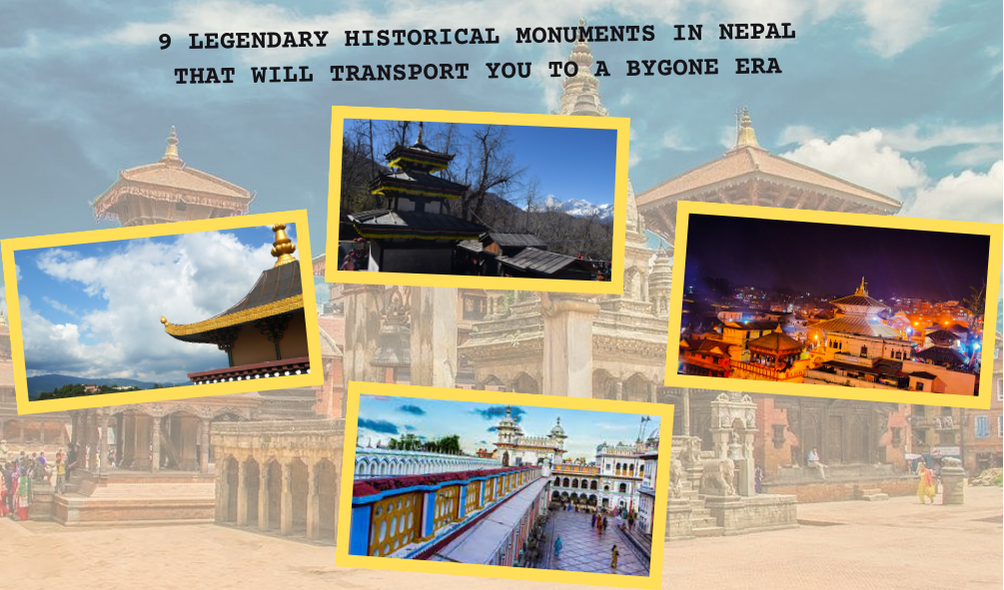Nepal, also known as ‘the roof of the world’ and ‘the mother of the universe’ (Sagarmatha), is always a popular choice among tourists and pilgrims due to its beautifully preserved history and culture. A common site for both Hindus and Buddhists, Nepal attracts pilgrims from across the world to experience the peace and diverse influences of these religions.
However, the history of Nepal extends beyond its religious and spiritual significance; it is a product of the dynasties that have ruled it and the empires that established their presence through rich culture and architecture. It’s also the birthplace of various mythologies.
These influences are embedded in the land of Nepal in the form of architecture. Today, we are going on a quest to uncover these historical monuments in Nepal. Join me in this journey as we look into some of the most historically important monuments and places in Nepal.
Quick Navigation
Toggle1. Kathmandu Durbar Square

A UNESCO World Heritage Site, Kathmandu Durbar Square is located in the heart of the capital city, Kathmandu, Nepal. This historic complex has served as the royal palace for the Malla and Shah dynasties for centuries, offering a glimpse into the rich history and culture of Nepal.
The origin of the Square can be traced back to the 3rd century, with modifications made in subsequent years. It was home to the Malla Kings who ruled Nepal from the 12th to the 18th century.
The Mallas greatly influenced the architecture of the square, constructing many iconic temples and palaces in the complex. In 1769, Prithvi Narayan Shah, the founder of the Shah Dynasty, conquered the throne of Nepal and declared the Durbar Square as the royal residence.
A mix of Newari, Indian, and Tibetan architectural styles, this complex is a major site for spotting iconic Hindu and Buddhist temples. A living reflection of Nepal’s soulful history, the Durbar Square provides a full-blown experience of Nepali culture. The prominent buildings include the Kumari Temple, Taleju Temple, Kasthamandap, and Hanuman Dhoka Palace.
2. Patan Durbar Square
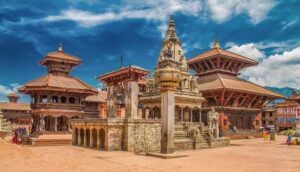
Situated in the small district of Lalitpur, in the lap of the Kathmandu Valley, is Patan Durbar Square. A visit to Patan Square offers an opportunity to breathe in the rich culture and history of the area.
Although primarily built by the Patan Kings during the Malla Dynasty, this historic complex served as a royal residence. Like Kathmandu Durbar Square, it is adorned with prominent temples. A prime location for Hindu and Buddhist followers, the complex includes several temples, such as the Krishna Temple, Golden Temple, and Bhimsen Temple.
Anyone visiting the Kathmandu Valley should have these two Durbar Squares on their must-visit list to fully experience the long history of Kathmandu.
3. Pashupatinath Temple
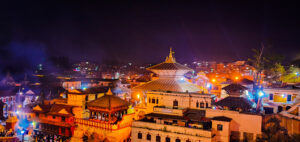
The Bagmati River is one of the prominent rivers of Nepal. On the banks of this holy river stands the Pashupatinath Temple, considered one of the most sacred temples for Hindus, dedicated to Lord Shiva. Its origin is believed to be rooted in the 5th century AD, although the current structure was built in the 15th century.
The name Pashupatinath is believed to have first been used in the Indus Valley Civilization. The seal of Pashupatinath (lord of the animals) found in the excavations of the Indus Valley Civilization proves that Lord Shiva has been worshipped since then.
Pashupatinath is one of the holiest places for Hindus, with a cremation ground in its temple complex. It is believed that those who die or are cremated near the temple achieve ultimate salvation. The temple’s intricate design and spiritual ambiance allow worshippers to experience inner peace.
4. Janakpur
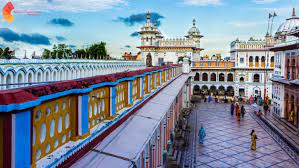
Janakpur, as the name suggests, is the land of Janak and holds immense mythological importance for Hindus. Ruled by King Janak during the times of the Ramayana, Janakpur is believed to be the birthplace of Sita, the wife of Lord Rama. This historical place in Nepal is a prominent religious center for Hindu pilgrims, adorned with small temples and shrines dedicated to the couple. The most famous temple in Janakpur is the Janaki Temple, dedicated to Sita. The temple is built in fine South Indian architectural style and is one of the largest temples in Nepal.
Janakpur’s history extends beyond its dynasties and recent events, reaching back to one of Hinduism’s most epic mythologies, the Ramayana. The city hosts various festivals and rituals related to Lord Rama and Sita, including Ram Navami and Sita Swayamvar.
5. Mustang Caves
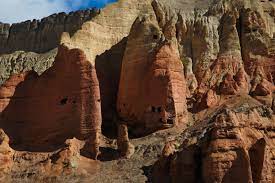
Nepal is home to various cultures, with Hindu and Buddhist cultures being the most prominent. The Mustang Caves are located in the remote district of Mustang, Nepal, and are believed to have been inhabited since the early 8th century AD. Many of these caves were used by Buddhist monks and nuns as a place to reside and rest due to the peaceful environment. The architecture of these monasteries is traditional Tibetan.
The caves are typically simple structures carved into the rock face, often featuring basic amenities such as sleeping areas, kitchens, and storage spaces. Some caves have intricate carvings and paintings depicting religious themes and local customs.
6. Sagarmatha National Park
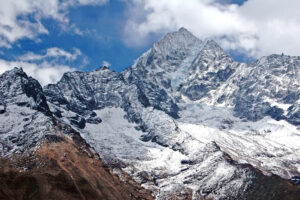
A UNESCO World Heritage Site, Sagarmatha National Park is home to a diverse range of flora and fauna, including various mammals like Himalayan black bears, snow leopards, red pandas, and numerous bird species. Established in 1976, the park covers approximately 1,148 square kilometers. The most iconic part of this biodiversity park is Mount Everest, the highest peak (8,848 meters) in the world.
The park is inhabited by the Sherpa people, skilled mountaineers, and is rich in cultural heritage, with numerous Buddhist monasteries and gompas scattered throughout the region. Tourists come here to experience breathtaking views of the Himalayas and the lives that thrive in this environment. The monasteries and gompas add to the park’s cultural significance, attracting worshippers as well.
7. Lumbini

Bodh Gaya is famously known among tourists and pilgrims for its beautiful temples and significance to Buddha’s life. While Bodh Gaya in Bihar, India is where Buddha achieved his salvation, he was born in Lumbini, now in Nepal. It is believed that Queen Maya Devi gave birth to Buddha under a Sal tree in Lumbini. Today, Lumbini is a prominent pilgrimage site for Buddhists worldwide.
King Ashoka of the Mauryan empire propagated Buddhism during his reign and constructed pillars across the world to celebrate Buddhism. One such pillar was erected here in Lumbini in the 3rd century BC, commemorating Buddha’s birth. A large temple complex featuring various Buddhist shrines, stupas, and monasteries has been built in Lumbini, along with the Maya Devi Temple, which is located exactly where Buddha was born.
Lumbini was declared a UNESCO World Heritage Site in 1997 due to the historical and cultural experience it provides. Visiting this city may leave you in a state of peace you have never witnessed.
8. Muktinath Temple

As the name suggests, people believe that Muktinath Temple is the door to achieving salvation. However, did you know that the temple complex is surrounded by 108 hot springs with different healing properties?
A revered pilgrimage site situated in the Mustang region of Nepal, Muktinath serves as a pilgrimage site for both Hindus and Buddhists. Taking a bath in the 108 springs is considered a sacred ritual for both religions.
The temple is surrounded by lush green valleys and snow-capped mountains, adding aesthetic appeal to its spirituality. The Muktinath Temple is a unique blend of Hindu and Buddhist architectural styles, with the main temple dedicated to Lord Vishnu, while the complex is filled with Buddhist monasteries and gompas.
With its unique blend of nature and spirituality, it becomes a must-visit destination for pilgrims and travelers seeking a spiritual experience.
9. Kopan Monastery

A renowned Buddhist monastery located in the Kathmandu Valley, Kopan Monastery is associated with the Tibetan Gelugpa tradition. Established in 1969 by Lama Zopa Rinpoche, a prominent Tibetan Buddhist teacher, the monastery is primarily known for its intensive meditation programs, attracting students from all over the world. The monastery also offers residential retreats for participants to live and study for extended periods.
wanna explore more check out this: 13 Ancient Cities of India: A Walk Through Ancient Civilization
The monastery provides valuable insights about Buddhism and serves as a serene site to deepen one’s meditation practice. It also contributes to the betterment of the community by engaging in development and social work.
Conclusion
In conclusion, Nepal is a place where its history is rightfully embedded in its monuments. These monuments reflect the high cultural values that have influenced the land and people of Nepal. Whether it pertains to Hinduism, Buddhism, or any other religion, the land of Nepal welcomes all with open arms.
The two Durbar Squares illustrate the luxury and royalty of the royal families who once resided in them. We also explored Sagarmatha National Park, nestled in the Himalayas, which provides

